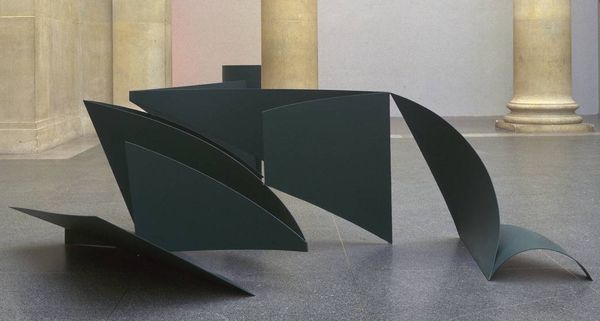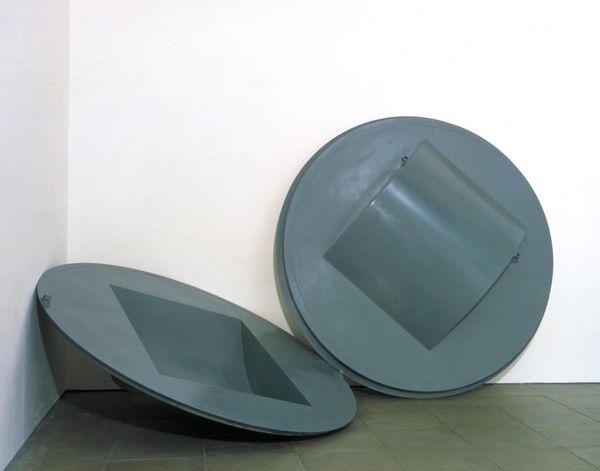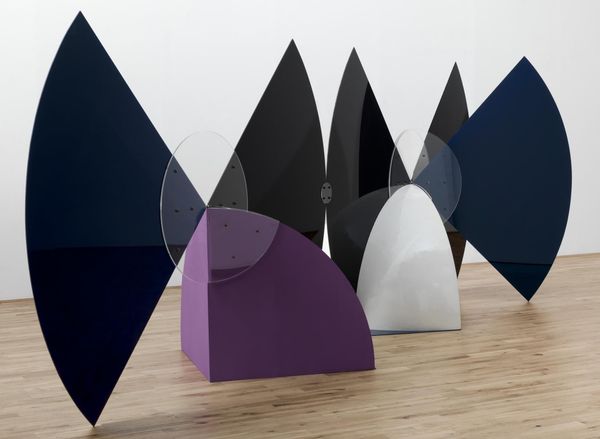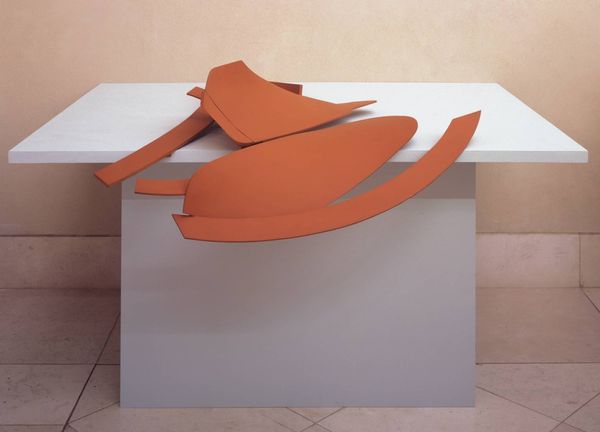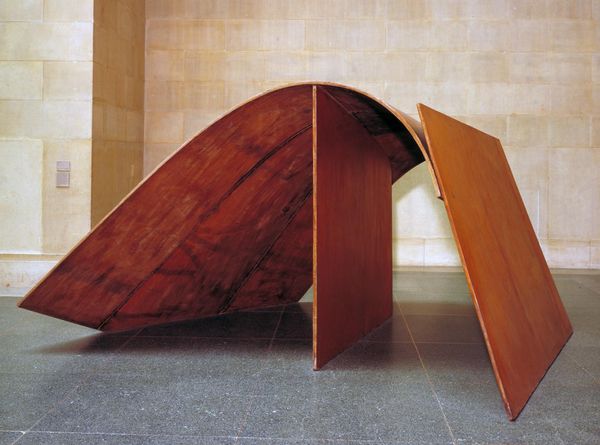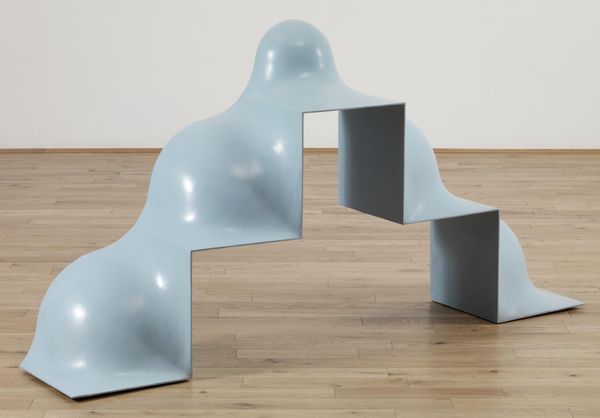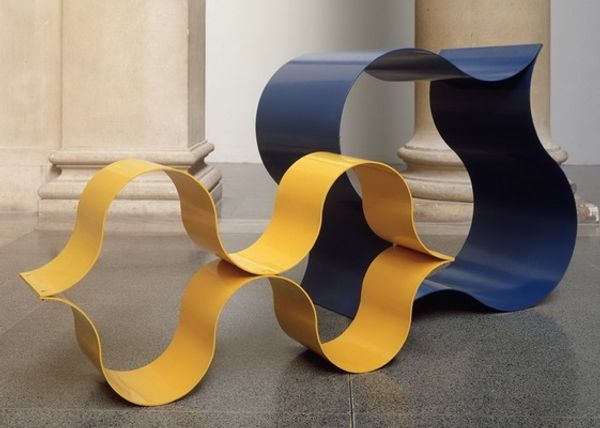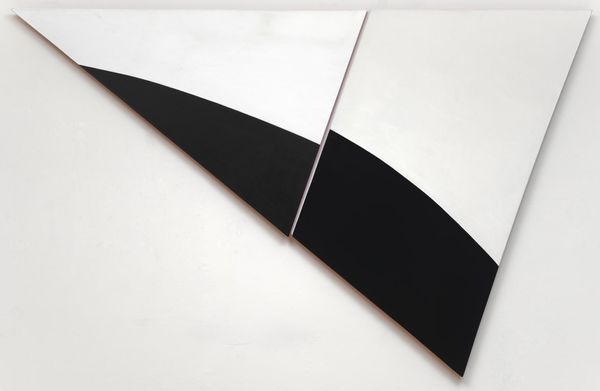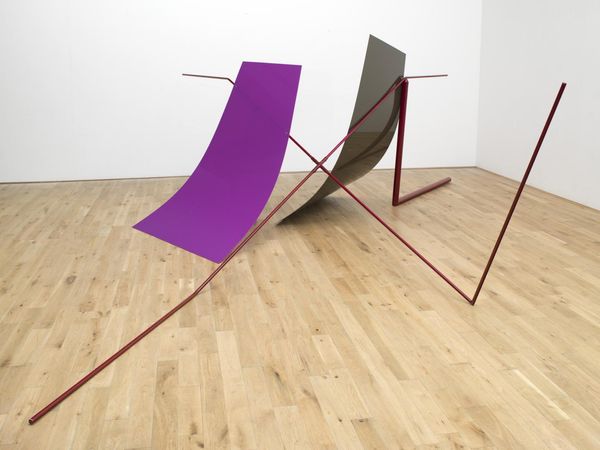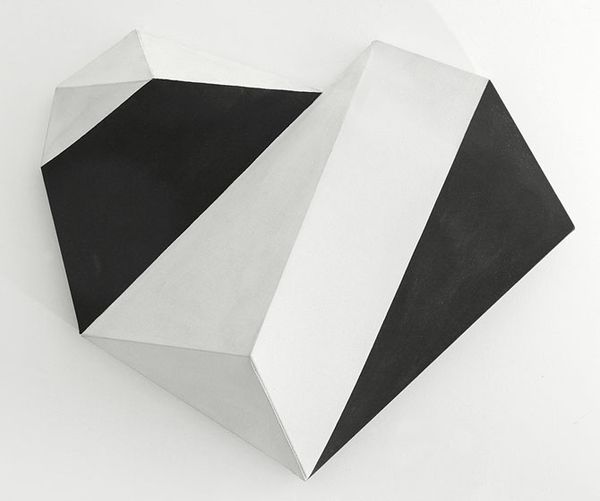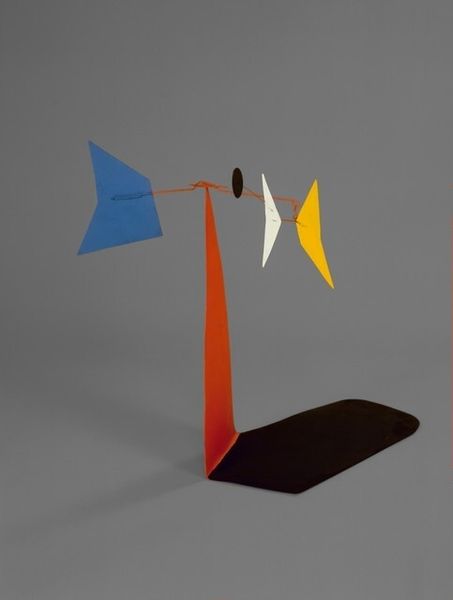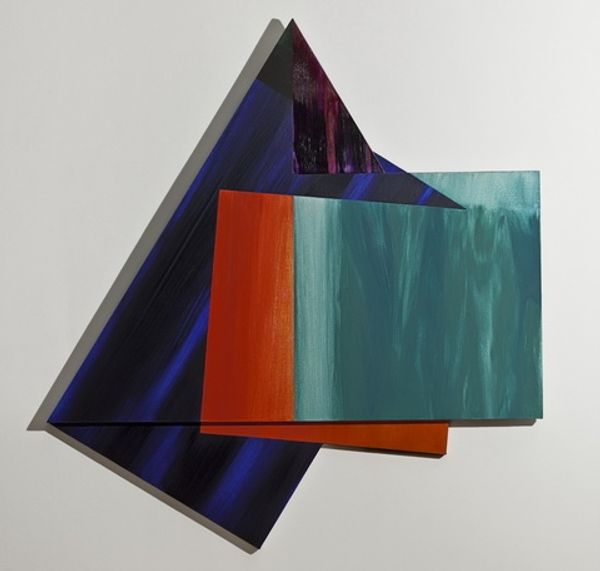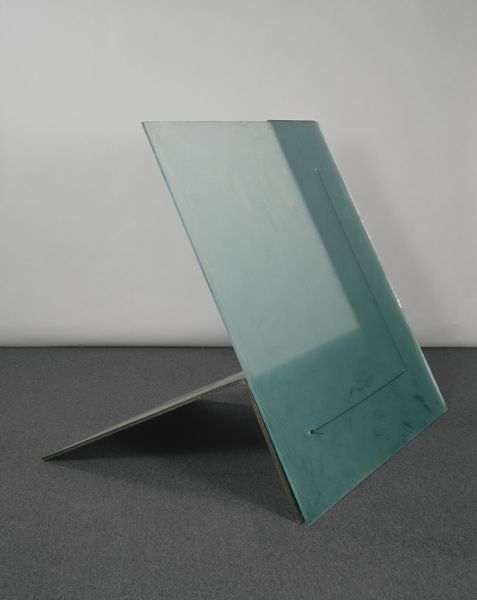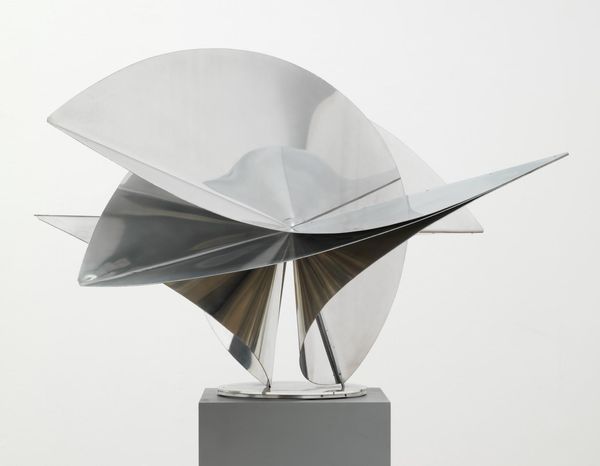
Dimensions: object: 1118 x 3632 x 2362 mm
Copyright: © Phillip King | CC-BY-NC-ND 4.0 DEED, Photo: Tate
Editor: This is Phillip King's "Green Streamer" from the Tate collection, a sculpture made of painted metal. It feels grounded, almost like industrial origami. What historical conversations do you think this piece is having? Curator: I see a dialogue with the male-dominated history of modernist sculpture, particularly its obsession with industrial materials. King, working in the late 60s, seems to be subtly critiquing this tradition. The green color choice subverts the coldness often associated with metal, perhaps hinting at a reclamation of organic forms. What do you think about its relation to other minimalist sculpture of the period? Editor: That’s interesting, I didn't think about the color as a form of resistance. It definitely makes it feel more approachable. I’m left wondering how it fits into today's discussions around the environment. Curator: Exactly. Its title, "Green Streamer," becomes loaded with new meaning in our current climate. It prompts us to consider the relationship between industrial production and ecological concerns, a conversation that is more urgent than ever.
Comments
Join the conversation
Join millions of artists and users on Artera today and experience the ultimate creative platform.
tate 8 months ago
⋮
During the 1950s King's sculptures were influenced by such earlier artists as Michelangelo, Rodin and Picasso. In 1960, he scrapped all his previous work as a result of seeing American Abstract Expressionist painting. The new American painting seemed to King to contain 'a sort of message of hope and optimism, large scale, less inbred'. Qualities of wit and humour, and largeness of scale, are characteristic of the abstract sculptures which King then began to make. 'Green Streamer' was made at the end of the 1960s when King was seeking to introduce a greater sense of space in his work. Its arrangement of curves vividly evoke an impression of movement. Gallery label, September 2004
